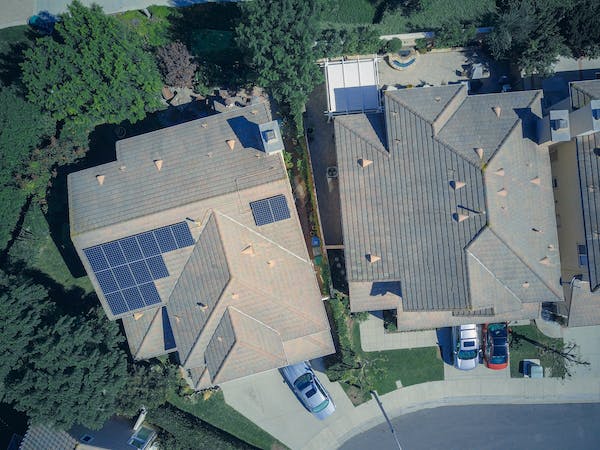Exploring the Benefits of Solar-Plus-Storage Tech: What Homeowners Need to Know
As the world continues to move towards renewable energy sources, solar-plus-storage technology is becoming increasingly popular among homeowners as an efficient and reliable way to power their homes. This technology combines solar energy with battery storage, allowing homeowners to store excess energy generated from their solar panels and use it when needed.
Solar-plus-storage technology offers a number of benefits that make it an attractive option for homeowners. One of the most significant advantages is that it helps to reduce electricity bills. With solar-plus-storage technology, homeowners can store excess energy generated from their solar panels and use it when needed, which allows them to save money on their electricity bills. Additionally, since solar-plus-storage technology eliminates the need for a traditional power grid, homeowners can enjoy greater energy independence and reliability.
Solar-plus-storage technology also helps to reduce carbon emissions. Solar energy is a clean, renewable energy source, and when combined with battery storage, it can help to reduce emissions by eliminating the need for traditional power sources. Additionally, solar-plus-storage technology can help to improve the resiliency of the power grid, as it allows homeowners to store energy in the event of a power outage.
For homeowners considering investing in solar-plus-storage technology, there are a few factors to keep in mind. First, it’s important to understand the upfront costs of the technology, as well as the long-term savings that can be achieved. Additionally, it’s important to consider the space and capacity needed to store the energy generated from the solar panels. Finally, it’s important to understand the regulations and incentives offered by local governments, as these can have a significant impact on the cost of the technology.
In conclusion, solar-plus-storage technology offers a number of benefits for homeowners, including reduced electricity bills, greater energy independence, and decreased carbon emissions. For homeowners considering investing in this technology, it’s important to understand the associated costs, space and capacity needs, and local regulations and incentives. With the right information, homeowners can make an informed decision and enjoy the benefits of this innovative technology.
How Solar Farms are Paving the Way For Renewable Energy
Solar farms are becoming an increasingly prevalent part of the renewable energy landscape. These large-scale facilities are helping to reduce the world’s dependence on nonrenewable energy sources such as coal and oil. Solar farms allow us to harvest the power of the sun and convert it into electricity. This energy can then be used to power homes, businesses, and entire communities.
A solar farm is essentially a large-scale photovoltaic system that collects solar energy through the use of solar panels. Solar farms are typically built in large, open spaces such as deserts or fields, and can range in size from a few acres to hundreds of acres. The solar panels are arranged in rows that are adjustable so that they can capture the most sunlight possible. The collected solar energy is then converted into electricity and can be used to power anything from a single household to a large city.
Solar farms are becoming increasingly popular for a variety of reasons. In addition to reducing our dependence on nonrenewable energy sources, solar farms also have other benefits such as creating jobs and stimulating the economy. Solar farms are also a great way to generate clean, renewable energy which helps to reduce the environmental impact of energy production.
Solar farms are paving the way for a more sustainable future. We can now harvest the power of the sun to generate electricity, reducing our reliance on nonrenewable energy sources and helping to create a more environmentally friendly world. As solar technology continues to improve, solar farms will become even more efficient and cost-effective, making renewable energy an even more attractive option.
The Latest Developments in Solar Cell Efficiency
The development in solar cell efficiency has been remarkable in recent years, as technological advances have pushed the boundaries of what is possible. A key indicator of solar cell efficiency is the ability to convert the sunlight into electrical energy. The higher the efficiency, the more electricity a solar cell can generate from a given amount of sunlight.
Recent breakthroughs in solar cell technology have enabled solar cells to reach a record-breaking efficiency of 44.5%. This efficiency was achieved using a combination of perovskite and silicon tandem cells, and is the highest efficiency ever achieved in a single-junction solar cell.
In addition to increasing the efficiency of single-junction solar cells, researchers have also been exploring ways to increase the efficiency of multi-junction solar cells. Multi-junction solar cells are constructed from several layers of different materials, each of which is tuned to capture different wavelengths of light. By optimizing the arrangement of layers, the efficiency of multi-junction solar cells has been pushed to a new record of 46.1%.
In the future, researchers hope to continue pushing the boundaries of what is possible with an aim of reaching an efficiency of 50%. This could potentially enable solar cells to generate electricity more efficiently than ever before.
Overall, the developments in solar cell efficiency have been remarkable, and it is likely that further advances in technology will result in even greater efficiencies in the future.
The Emergence of Autonomous Solar Tracking and Its Impact on Renewable Energy
As renewable energy sources become more accessible and affordable, the need for efficient tracking systems to maximize output has grown. Autonomous solar tracking is a technology that has emerged to meet this need, providing a new way to maximize the potential of solar energy. This technology can have a significant impact on renewable energy sources, providing increased efficiency and cost savings.
Autonomous solar tracking is a technology that enables solar panels to follow the movement of the sun as it passes overhead. This allows them to capture more sunlight, which in turn increases the amount of energy produced. The tracking systems use sensors to detect the position of the sun and then adjust the angle of the solar panels accordingly. This technology also eliminates the need for manual tracking, which can be time consuming and costly.
The use of autonomous solar tracking can have a major impact on renewable energy sources. By increasing the efficiency of solar panels, it can significantly reduce the costs associated with solar energy production. This cost savings can then be passed on to consumers, making renewable energy more affordable and accessible. Additionally, increased efficiency can help to reduce the amount of energy wasted, further contributing to cost savings.
The emergence of autonomous solar tracking is a major development in the field of renewable energy. By providing a way to maximize the potential of solar energy, it can help to reduce costs and increase efficiency. This technology will likely continue to improve over time, providing further benefits for renewable energy sources.
Advances in Battery Storage Technologies and How They Help Solar Power Generation
Battery storage technologies have been advancing rapidly in recent years, and this has had a positive impact on the growth of solar power generation. This is because batteries are an effective way to store excess energy generated by solar panels. This allows solar energy to be used even when the sun isn’t shining.
Batteries store energy in the form of chemical bonds. When electricity is needed, the battery releases the energy as electrical current. The most common type of batteries used for solar energy storage are lead-acid, lithium-ion, and flow batteries.
Lead-acid batteries are the oldest type of battery technology and are the most affordable. They have relatively low energy density, meaning they are not very efficient in terms of storing energy compared to other technologies. However, they are still widely used in solar energy storage systems due to their low cost and durability.
Lithium-ion batteries are the newest battery technology and are the most efficient in terms of energy density. They are also the most expensive, but their higher efficiency means they can store more energy in a smaller space than lead-acid batteries. This makes them ideal for solar energy storage systems, as they can store more energy for longer periods of time.
Flow batteries are the latest battery technology and are becoming increasingly popular. They store energy in liquid electrolytes, which can be quickly and efficiently released as electrical current when needed. This makes them ideal for large-scale solar energy storage systems, as they can quickly and efficiently store large amounts of energy.
These advances in battery storage technologies have enabled solar energy to be stored more effectively than ever before. This has allowed solar energy to be used even when the sun isn’t shining, and has been an important factor in the growth of solar power generation. As battery storage technologies continue to improve, solar energy will become even more accessible and reliable.






